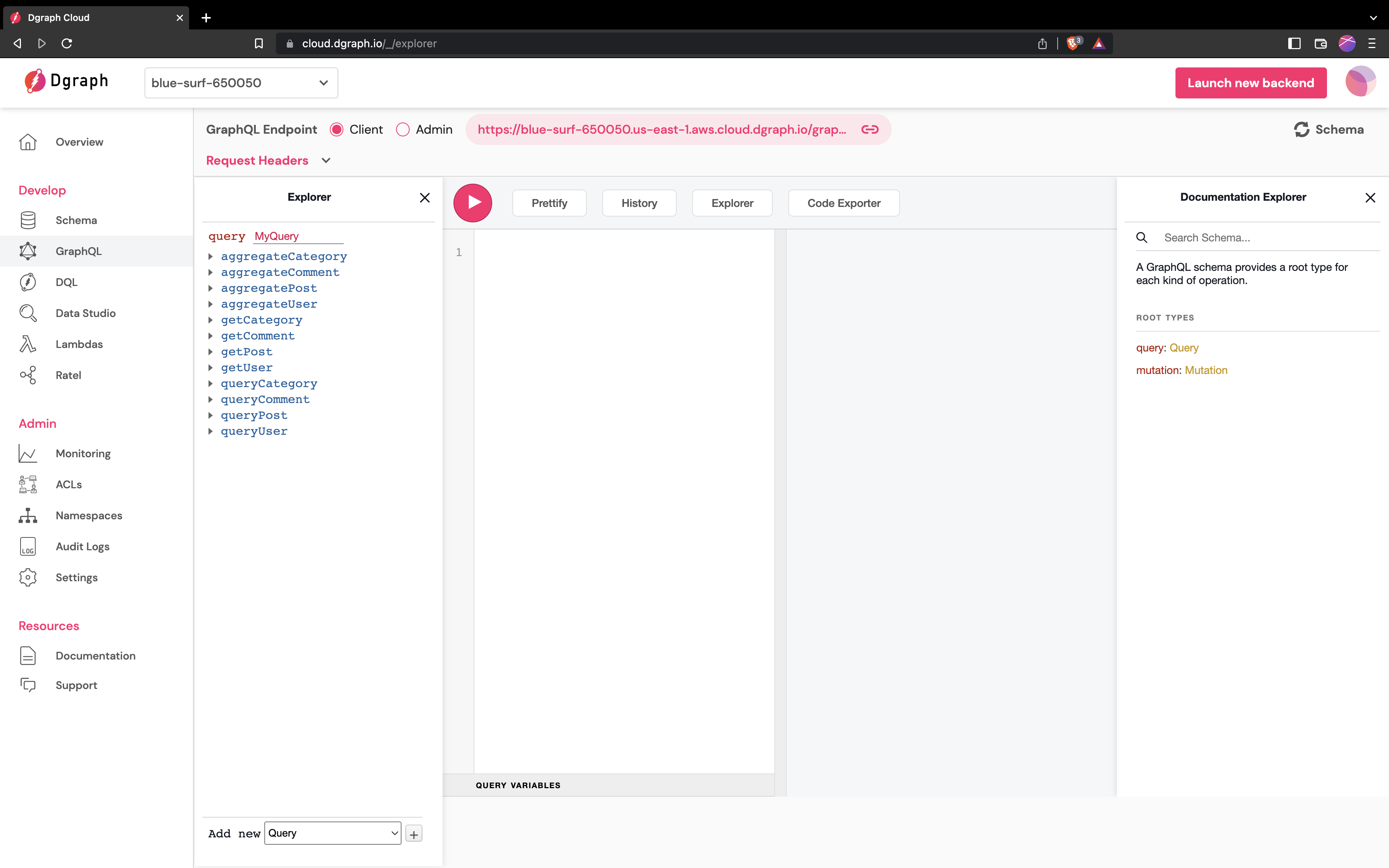We’re overhauling Dgraph’s docs to make them clearer and more approachable. If
you notice any issues during this transition or have suggestions, please
let us know.
- queries: used to find a starting point and traverse a subgraph
- mutations: used to change the graph and return a result
- subscriptions: used to listen for changes in the graph
Introspection
Many GraphQL tools support introspection and generate documentation to help you explore an API. There are several tools in the GraphQL ecosystem you can use to explore an API, including GraphQL Playground, Insomnia, GraphiQL, Postman, and Altair. You can also explore your GraphQL API using the API explorer that’s included in the Dgraph Cloud web UI. Navigate to the GraphQL tab where you can access the introspected schema from the “Documentation Explorer” in the right menu. From there, you can click through to the queries and mutations and check out the
API. For example, this API includes mutations to add, update and delete users,
posts and comments.
Next, you’ll
learn more about the API that Dgraph Cloud created from the schema
by trying out the same kind of queries and mutations you’ll use to build the
message board app.
From there, you can click through to the queries and mutations and check out the
API. For example, this API includes mutations to add, update and delete users,
posts and comments.
Next, you’ll
learn more about the API that Dgraph Cloud created from the schema
by trying out the same kind of queries and mutations you’ll use to build the
message board app.
